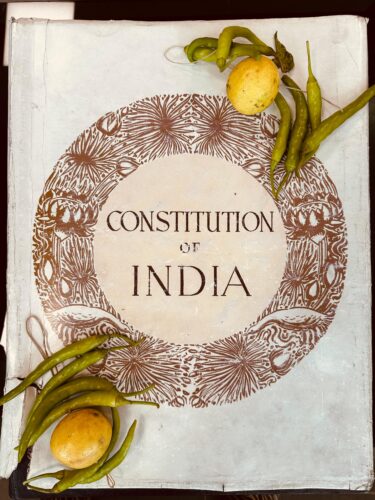The desensitisation of India and its people towards cases of superstition and human sacrifice is a phenomenon worth studying. As a researcher on the subject, I have been tracking cases of Human sacrifice for the past two years, and just in the last six months, I have found instances of ritualistic killings in almost every single month of the year.
The victims vary from a 7-month-old infant to a 65-year-old man. The murders and suicides have taken place in the most prosperous State of Gujarat and in the most downtrodden State of Bihar. Decapitation, burning, stabbing, and slitting have been common ways to end the lives of these victims. The reasons range from the economic prosperity of a school, to an astrologer’s advice.
Reading these news pieces is definitely unsettling, but what’s worse is the indifference on display by the common conscience; no mainstream articles, prime-time debates, or even viral posts on X. The victims, more often than not, tend to be women, children, the elderly, minorities, and economically disadvantaged classes of people. This raises a few fundamental questions: what has numbed the conscience of an entire nation? Why is there no hue and cry against these murders, stampedes, and suicides? And how can this be repaired?
The snowball of harmful superstitious practices
Superstitions have a cascading effect. Belief in a minuscule and harmless practice can reinforce other potentially harmful beliefs. For example, India has a massive economy based around lemons and chilies. Obviously, Indian food (which, in my intellectual opinion, is the most incredible food ever) requires a lot of lemons and chilies. Still, this particular market is not driven by the Indian culinary bazaars; instead, it owes its success to the superstitious belief in the evil eye. Lemons and chilies are believed to be a firewall against negative energy and curses.

The belief in the evil eye reinforces the idea that curses and hostile spiritual forces exist. When home remedies cannot counter these powers, believers resort to higher authorities, such as priests, exorcists, faith healers, and godmen. The services availed usually come with a hefty price tag. The acrobatics involved in ending demon possessions with exorcisms, foretelling a prosperous future after charity, and even curing disabilities often convince the masses that these practices will act like an elixir for their never-ending life problems.
For some people, the cycle ends once time takes its course and circumstances turn for the better, but for a fraction of the aggrieved, the misfortunes continue. At the very end of this process, people end up gravitating to even worse tactics, enabled by religious or traditional means, and some of these tactics can even include human sacrifice. The trigger has a distant yet plausible cause-and-effect relationship with the final horrendous outcome.
These forces are perhaps best exemplified by the Hathras Stampede tragedy of Uttar Pradesh, India. During a massive prayer meeting, where the capacity of the venue was 80,000 people, the crowd swelled to 250,000 people. When the godman left the prayer meeting, people rushed towards him to get a glimpse of his blessings. The resultant deadly stampede ended up killing 120 people.
The desensitisation of a billion people
India is vast and ancient. So is its long lineage of traditions, rituals, culture, and religions. Every faith, sect, and movement actively promotes unscientific and irrational beliefs. The Indian public’s bandwidth has never collectively entertained constructively debating and countering superstition, because superstitions have been constantly affirmed in their lives and belief system through religious teachings, customary social practices, and the mass media.
As a matter of fact, the popular news and mass media outlets consistently plague the internet, television, and print media with content and products that proactively promote superstitious beliefs. During Covid, several Indian mainstream news outlets peddled the one-and-only cure for Covid: a Yoga Guru’s herbal product called ‘Coronil’, which claimed that it could completely heal an infected patient within weeks. Later, the Supreme Court of India forced the company and its promoters to apologise to the country for their misleading advertisements.
It was not a one-off. A ‘Godman’ in India who claims to possess the power of clairvoyance and the ability to cure even the most life-threatening illnesses has become the darling of Indian social media and news media alike. He amasses millions of views across the internet while he travels in private jets and luxury cars. The victims of these gurus and godmen are people from lower economic classes or castes, women, and children. A larger section of people ignores the crimes and promotes the bad actors to a point of unimaginable money, power, and control.
The silver lining

The Constitution of India, under its Article 51A(h), makes it the duty of the citizens and government of India to adopt a scientific temperament. The directive principle advises the organs of the government, as well as members of civil society, to promote scientific thought in Indian Society. Meanwhile, non-governmental organisations such as the Maharashtra Andhshraddha Nirmoolan Samiti (MANS or Maharashtra Anti-Superstition Association) have fought against superstitions for decades. They run scientific awareness drives, rally for policies and legislation against evil practices, and even litigate against peddlers of superstitions.
Such organisations are a line of defence against the evils of superstitions. MANS and its Late Founder, Dr Narendra Dabholkar, were instrumental in bringing an Anti-Superstition Law to reality. What is notable is that eight states in India have already criminalised the practice of black magic and other superstitious practices through anti-superstition laws.
Unfortunately, the laws are poorly executed due to a lack of political will and societal support. While a strict law that criminalises harmful superstitious practices will deal with the symptoms of this sickness, but the root cause still lies in the public conscience. To counter superstitions and their crimes, there needs to be a long-term project that creates both a national law against superstitions, as well as a socio-legal policy for public awareness and education.



